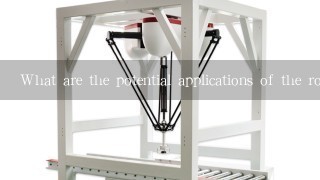What are the potential applications of the robot?

A. Healthcare
- Assisting surgeons in performing complex surgeries with greater precision and safety.
- Providing rehabilitation therapy to patients with physical disabilities.
- Performing remote patient monitoring and disease monitoring.
B. Manufacturing
- Assembly line automation, reducing human error and increasing productivity.
- Quality control inspection, identifying defects and ensuring product quality.
- Performing hazardous or repetitive tasks, freeing up human workers for more complex tasks.
C. Education
- Creating personalized learning experiences for students with disabilities.
- Providing virtual assistants for students with learning difficulties.
- Automating administrative tasks, freeing up teachers' time.
D. Defense
- Developing autonomous weapons systems, reducing human risk and increasing precision.
- Monitoring and detecting threats, providing early warning systems.
- Performing reconnaissance and surveillance tasks, increasing situational awareness.
E. Other
- Personal assistants, providing companionship and care.
- Security and surveillance, monitoring public spaces and critical infrastructure.
- Agriculture, automating tasks such as planting, harvesting, and pest control.
Additional benefits:
- Increased efficiency and productivity: Robots can perform tasks much faster and more efficiently than humans.
- Reduced costs: Automation can eliminate the need for human labor, reducing labor costs and increasing profit margins.
- Improved quality and safety: Robots can perform tasks with greater precision and safety, reducing the risk of accidents and errors.
- Enhanced accessibility: Robots can provide assistance to people with disabilities who may not be able to perform tasks on their own.
Overall, the potential applications of robots are vast and continue to expand. As technology advances, we can expect to see robots playing an increasingly important role in our lives and society.

















































